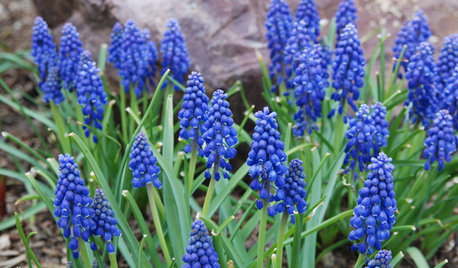Near the end of winter, when New England gardeners are sick to death of snow and mud and dead vegetation, they despair of spring ever coming. The catalogs are worn, more plants have been ordered than the budget allows, yet the garden just sits and sulks. And so does the gardener, who can get unbearably whiny and pouty without green stuff to play with (just ask the spouse and family).
Then one night comes a chorus of "peeping" from the distant woods that brings hope into the heart, and knowledge that there WILL be a spring this year, and SOON! Even New Englanders who've lived in the middle of a city for 20 years will respond joyously to the words "WE HAVE PEEPERS!"
And so the word goes out each spring, and different localities of New England excitedly report the return of the peepers. And invariably a newcomer will ask "What on earth are they talking about? Is this a joke, like a snipe hunt or the search for a left-handed wrench?"
Yes Virginia, there really are peepers, and they're frogs, not birds (no, this is not a joke).
THE SPRING PEEPER: The critter is a tiny frog that used to be called Hyla crucifer, but has now been renamed Pseudacris crucifer. Frog taxonomists have the same mercurial habits as botanists - can't leave names alone.
The peepers are still considered to be in the tree frog family; however, the herpetologists in their wisdom have decided that the peepers have more in common with the chorus frogs (Pseudacris species) than with the classic treefrogs (Hyla species), because of the size of their toe pads and the fact that they don't like to climb very high.
Whatever you want to call it, the northern spring peeper is only about 1 1/4" (18 to 33 mm) long, tan or gray or brown with a dark cross on its back (whence comes the name crucifer). Like other frogs, it goes through a life cycle involving mating, laying eggs in water which hatch into tadpoles, which then metamorphose into frogs who head off onto dry land. The frogs overwinter in soil and can actually survive freezing.
The peeper is found throughout the eastern U.S. and into Canada as well.
THE CHORUS: Only the males sing, to attract the females. The males gather en masse, but each male stakes out his own little territory and starts calling. The individual calls have been compared to the "peeping" of a newly hatched chick, and the chorus has been compared to the jingling of distant sleigh bells. If you do a web search for "spring peeper" you'll find a number of sites which will actually allow you to hear the songs.
If a female likes the song, she joins the male and they head off to the water to mate.
TIMING: The breeding season is from March through May, but sometimes isolated peepers can be heard in the fall when the weather cools down.
FIRST SPRING PEEPER REPORT IN NEW ENGLAND:
2006
- March 13 at the Connecticut shoreline Zone 6, reported by sooey. See the FAQ for other areas.
............................................................................................................................................................
WHY CARE?
You might say, OK, there are frogs singing madly out there, but why should a gardener care?
As Chelone, a Garden Web member says:
"In case you don't know, "PEEPERS", are the "door bells" of spring in New England.
They are the amphibian equivalent of the chorale in Beethoven's ninth symphony. To those of us who survive a New England winter (willingly or unwillingly) they are the harbingers of SPRING.
ANYTHING RELATING TO "PEEPERS" POSTED IN MARCH/APRIL IS OF VITAL IMPORTANCE TO MANY OF US...
Get it?!" ............................................................................................................................................................













Related Discussions
So how important is the right mix, anyway? (obsessive spouse)
Q
peepers
Q
Peepers!
Q
I Hear Peepers!
Q